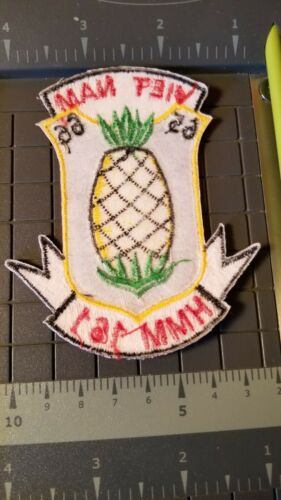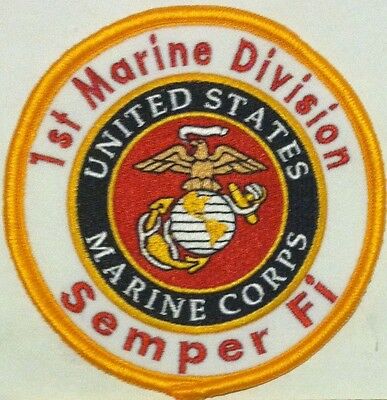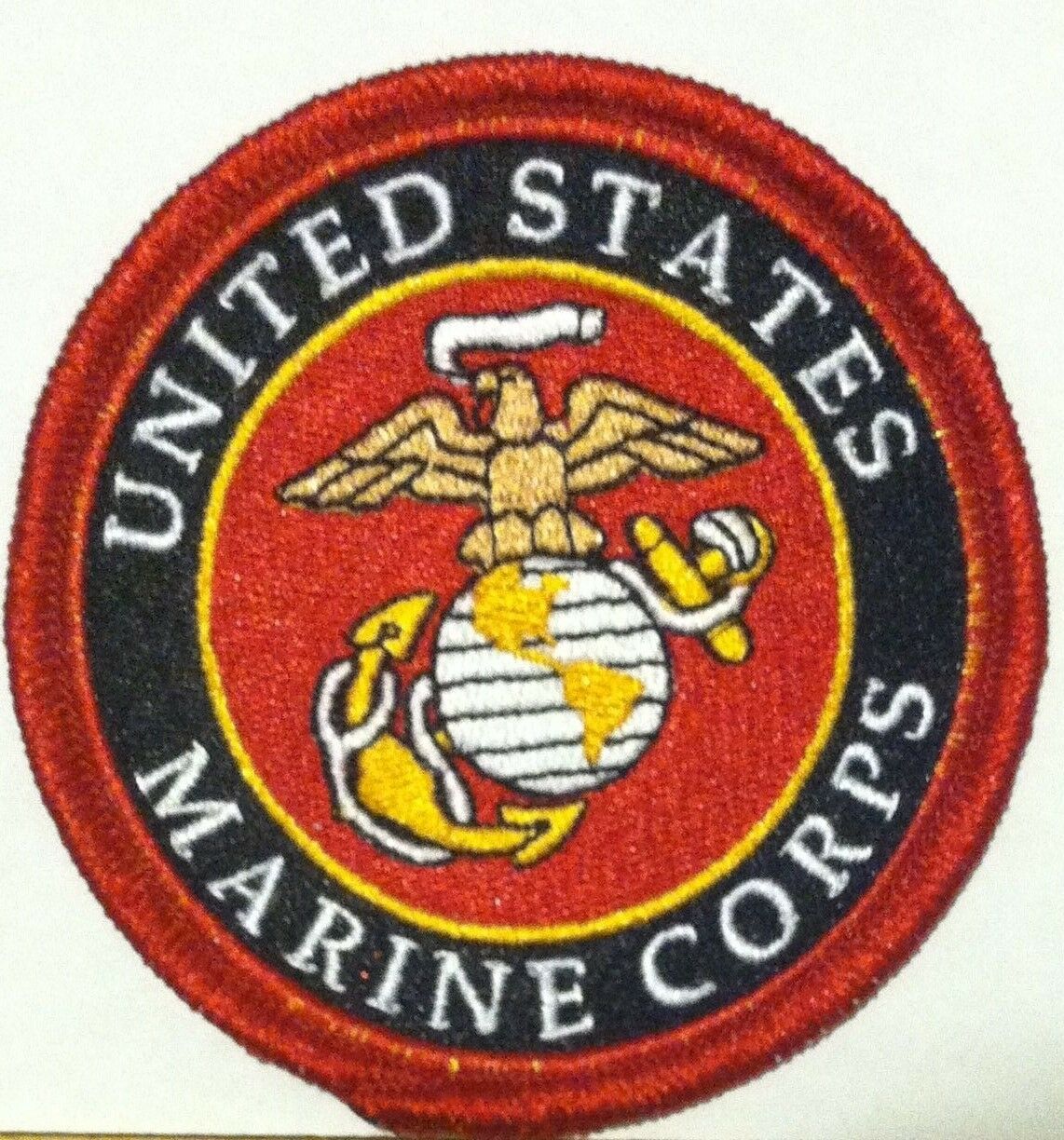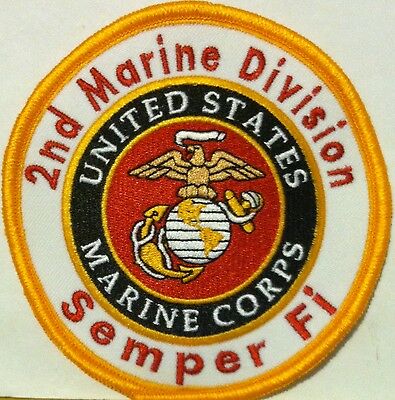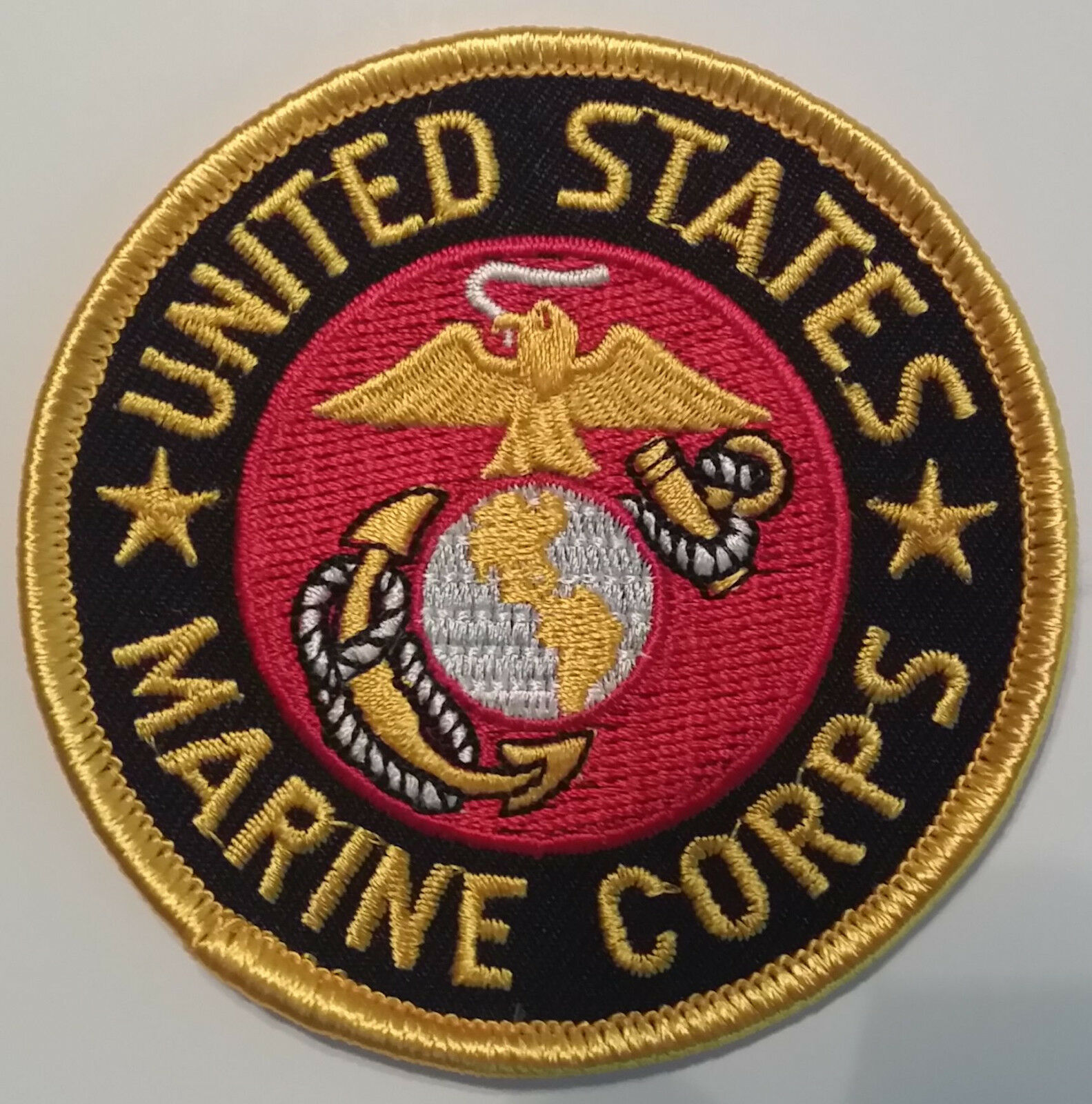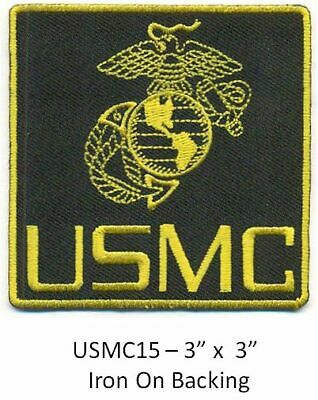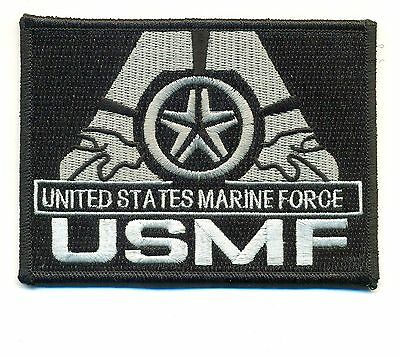-40%
USMC PATCH HMM 161 NEW -SEE STORE A TON OF USMC PATCHES COMBINE SHIPPING !!
$ 3.03
- Description
- Size Guide
Description
WE SHIP WORLDWIDE 14 EUROPLEASE FOLLOW OUR E BAY STORE
SEE ALL PICS
WE COMBINE SHIPPING ( no shipping fee for the second item when you buy two or more like items )
SALE
SEE OUR STORE
PLEASE READ WHOLE ADD
VERY REAL THING
SIZE: 2 1/2 X 3
VMM-161
From Wikipedia, the free encyclopedia
Jump to navigation
Jump to search
Marine Medium Tiltrotor Squadron 161
New VMM-161 insignia
Active
January 15, 1951 - present
Country
United States
Allegiance
United States of America
Branch
United States Marine Corps
Type
Medium-lift tiltrotor squadron
Role
Assault Support
Part of
Marine Aircraft Group 16
3rd Marine Aircraft Wing
Garrison/HQ
Marine Corps Air Station Miramar
Nickname(s)
"Greyhawks"
Motto(s)
"Equitatus Caeli"
"Cavalry from the Sky"
Tail Code
YR
Engagements
Korean War
Vietnam War
*
Operation Starlite
Operation Desert Storm
Operation Enduring Freedom
Operation Iraqi Freedom
Commanders
Current
commander
LtCol Michael Hutchings
Notable
commanders
Keith B. McCutcheon
Conducting Fastrope operation on MCAS Camp Pendleton in 2016
Marine Medium Tiltrotor Squadron 161
(
VMM-161
) is a
United States Marine Corps
transport squadron consisting of
MV-22 Osprey
tiltrotor
aircraft. The squadron, known as the "Greyhawks", is based at
Marine Corps Air Station Miramar
,
California
and falls under the command of
Marine Aircraft Group 16
(MAG-16) and the
3rd Marine Aircraft Wing
(3rd MAW). The squadron has the distinction of being the first helicopter transport squadron in the world.
[1]
History
[
edit
]
Korean War
[
edit
]
The squadron was activated on January 15, 1951 at
Marine Corps Air Station El Toro
,
California
, as Marine Helicopter Transport Squadron 161 (
HMR-161
) Air Fleet Marine Force Pacific, the squadron moved a month later to Marine Corps Air Facility, Santa Ana, California to train on their new helicopter, the Sikorsky HRS-1. Except for the commanding officer, LtCol George Herring, most pilots in the squadron had flown fighters during
World War II
.
[2]
In August 1951 the squadron deployed to
Korea
and attached to the
1st Marine Aircraft Wing
(1 MAW), where it operated in the central and the western fronts.
[3]
HRS-1s of HMR-161 flying from
USS
Sicily
in September 1952.
After becoming the first helicopter squadron to deploy troops into combat, HMR-161 successfully flew from the
USS Sicily (CVE-118)
to test new concept of combining
vertical envelopment
with
amphibious assault
during Operation "Marlex-5" off the coast of
Inchon
on September 1, 1952. While not the first ever ship to shore helicopter flight with Marines aboard, that having been done by HMR-162 during Operation Lex Baker off the coast of Southern California in February, 1952, it was the first on foreign shores. During the course of the Korean War, HMR-161 flew 16,538 hours during 18,607 sorties eventually accounting for over 60,000 troop movements and moving 7.5 million pounds of cargo.
[4]
[5]
The Greyhawks then participated in the defense of the
Korean Demilitarized Zone
(DMZ) from July 1953 to March 1955. The Squadron then relocated that month to
Marine Corps Air Station Kaneohe Bay
,
Hawaii
, and attached to
Marine Aircraft Group 13
(MAG 13). While in Hawaii, HMR-161 was redesignated on December 31, 1956 as
Marine Helicopter Transport Squadron (Light) 161
(
HMR(L)-161
), MAG 13, 1st MAW. In May 1960, the Squadron received the new Sikorsky
H-34 Seahorse
.
On February 1, 1962, the unit was once again re-designated as
Marine Medium Helicopter Squadron 161
(
HMM-161
), MAG 13, 1st Marine Brigade. On October 3, 1962 the Greyhawks assisted NASA by recovering astronaut Wally Schirra and his Mercury Capsule "Friendship Seven" out of the Pacific after a successful launch into space.
During 1963,
Marine Medium Helicopter Squadron 161
(
HMM-161
) assisted in several biological warfare tests conducted under
Project SHAD
at
Pearl Harbor
,
Kaneohe Naval Air Station
and in the Pacific Ocean, near
Oahu
, Hawaii.
Further information:
Project 112
The rest of the early 1960s were spent conducting anti-guerrilla training in preparation for deployment to Vietnam.
Vietnam War and the 1980s
[
edit
]
A helicopter from HMM-161 waiting to transport prisoners just south of
Chu Lai
during
Operation Starlite
in 1965.
HMM-161 deployed in May 1965 to
Phu Bai Combat Base
,
Republic of Vietnam
[6]
and attached to MAG-16,
1st Marine Aircraft Wing
. It then relocated in January 1966 to
Marine Corps Air Station Futenma
,
Okinawa
to receive its new Vertol
CH-46 Sea Knight
. By April 1966, the Greyhawks had redeployed to
Da Nang
, Republic of Vietnam with a move to Phu Bai that June. On September 25, 1966 a
UH-34D HUS
from HMM-161 was struck by a friendly artillery shell while conducting a medevac mission during
Operation Prairie
resulting in the death all five Marines on board. It is the only known case of friendly artillery fire shooting down an American helicopter during the war.
[7]
The squadron relocated once again in November 1966 to Futenma, Okinawa, where it was attached to
Marine Aircraft Group 15
(MAG-15), 9th Marine Amphibious Brigade. A month later the Greyhawks returned to CONUS, as they were attached to
Marine Aircraft Group 26
(MAG-26),
2d MAW
at
Marine Corps Air Station New River
,
North Carolina
. HMM-161 then redeployed in May 1968 to
Quảng Trị Combat Base
, Republic of Vietnam and attached to provisional
Marine Aircraft Group 39
(MAG-39), 1st MAW. The Squadron finished its Vietnam years with its final deployment to Phu Bai in October 1969 while attached to MAG-16, 1st MAW.
HMM-161 came home in September 1970 and attached to MAG-56,
3rd Marine Aircraft Wing
, Fleet Marine Force Pacific. It was reassigned in July 1971 to MAG-16, 3d MAW. Elements of the Squadron participated in the August 1989 cleanup of the
Exxon Valdez
oil spill in
Prince William Sound
,
Alaska
.
CH-46E
The Gulf War and the 1990s
[
edit
]
Old HMM-161 insignia.
In 1990 they deployed on August 17 to
Saudi Arabia
as part of MAG-70, 7th Marine Expeditionary Brigade in support of
Operation Desert Shield
. The squadron would eventually participate in
Operation Desert Storm
in Saudi Arabia and
Kuwait
. In 1995, they participated in
Operation United Shield
, the withdrawal of
United Nations
Forces from
Somalia
. By the end of the year, the unit had relocated to
MCAS El Toro
,
California
. In 1997, the Greyhawks deployed in March aboard the USS
Boxer
to the WESTPAC and Persian Gulf as the ACE for the 15th MEU(SOC), where they flew missions in support of
Operation Southern Watch
in
Iraq
. In February 1999, HMM-161 moved from MCAS El Toro to
MCAS Miramar
, California.
Global War on Terror
[
edit
]
The new millennium began well for the Squadron, as it won the Edward C. Dyer Marine Medium Helicopter Squadron of the Year for 2001. This followed the 2000 WESTPAC Deployment, which saw the Greyhawks provide
humanitarian assistance
in
East Timor
. On January 6, 2003, HMM-161 (Rein) deployed as a part of the 15th MEU for a WESTPAC Float that would end up supporting
Operation Enduring Freedom
and
Operation Iraqi Freedom
. The Greyhawks were assigned the mission of Tactical Recovery of Aircraft and Personnel (TRAP). Although no TRAP missions were necessary during the OIF, the Squadron did fly
Casevac
and numerous other missions. The Squadron returned home to
MCAS Miramar
on July 12, 2003.
In November 2003, Marines of HMM-161 were told they would be redeploying to Iraq for Operation Iraqi Freedom II (OIF II). Immediate preparations were begun, and the Squadron used its December deployment to
Indian Springs, Nevada
to train for the conditions that would be faced during OIF II. While at Indian Springs, the Marines of HMM-161 made their mark in Squadron history by surpassing the 40,000 mishap-free flight hours plateau. This climb into the history books began back in August 1995 and culminated with a ground crew appreciation flight over the
Hoover Dam
and the
Las Vegas Strip
.
After receiving its cargo and aircraft at Ash Shu'aybah Port,
Kuwait
, the Squadron flew up to
Al Taqaddum
,
Iraq
during the first week of March to set up for the relief in place with the
82nd Airborne
Brigade. The Squadron made 752 consecutive mission launches in support of
I MEF
operations during OIF II, logging 3072.8 hours of flight time. The Greyhawks were relieved on September 1, 2004 by HMM-268 with the main body arriving back at
MCAS Miramar
on September 6. Throughout their service during OIF II, the Greyhawks moved 116,480 pounds of cargo and 2,929 passengers, including 328 patients that needed urgent care.
HMM-161 Phrog painted for squadron's 55th Anniversary celebrated in Iraq on January 15, 2006.
In August 2005, the squadron redeployed to Iraq for its third OIF deployment. The Greyhawks provided around-the-clock casualty evacuation and assault support in
Al Anbar Province
. During this deployment, the squadron flew 5,199 combat flight hours, transported more than 2,100 wounded personnel and conducted 19 raids and assault support missions that led to the capture of numerous insurgents. The Greyhawks safely completing 2,999 assault support requests without mishap or damage from enemy action.
On February 8, 2006, HMM-161 marked their 50,000th flight hour without a Class "A" mishap during their latest deployment to
Al Taqaddum
, Iraq. During this time period, which began February 19, 1995, the squadron flew 9,100 combat hours during three combat deployments.
[8]
The squadron returned from its third OIF deployment on March 4, 2006. Following the deployment the squadron was awarded its fourth consecutive Chief of Naval Operations Safety Award and the Marine Corps Aviation Association's 2006 Commandant's Aviation Award in recognition as the year's best overall performance by a Marine squadron.
On February 3, 2007, HMM-161 embarked upon its fourth combat deployment in support of
Operation Iraqi Freedom
and the
Global War on Terror
by sending a small advance party back to
Al Taqaddum
,
Iraq
to prepare for the arrival of the Squadron's Main Body on March 1. The Greyhawks officially resumed their role in Casualty Evacuations and General Support on March 9, 2007.
On September 24, HMM-161 returned from
Al Taqaddum
, Iraq, with their CASEVAC bell, the symbol of their mission in the area. They took the bell with them instead of leaving it for the next squadron because the mission of CASEVAC had been temporarily turned over to the soldiers of an
Army
Blackhawk
detachment on the same base.
[8]
As of the end of the deployment, the squadron is at a record of over 58,000 class A mishap free flight hours total. This achievement is unable to be surpassed by any other CH-46E squadron due to the fact the new
MV-22 Osprey
will be replacing the CH-46E, and no other squadron has a record close enough to the Greyhawks' that they would be able to beat it.
In December 2009, HMM-161 became the first of ten west coast squadrons to transition to the MV-22 Osprey and changed their name to Marine Medium Tiltrotor Squadron 161 during the change of command.
[9]
[10]
In May 2017, VMM-161 lost an Osprey in an accident in Hawaii.
[11]


